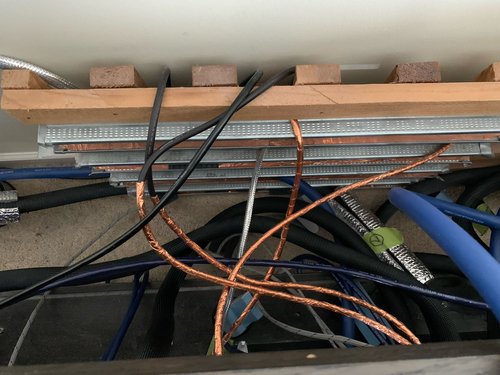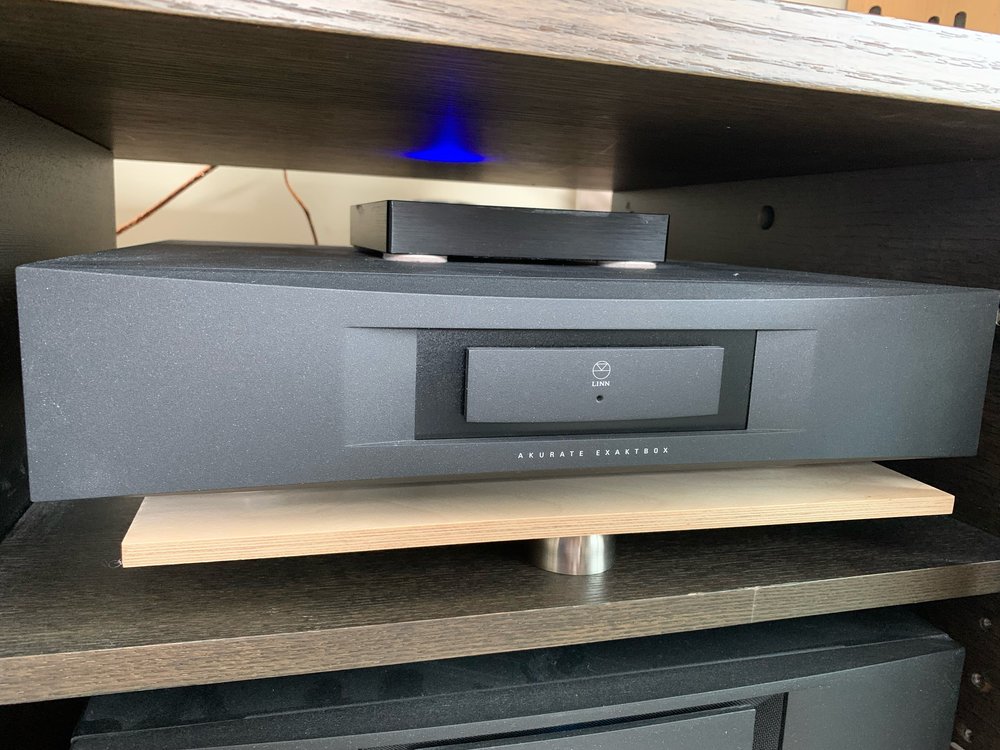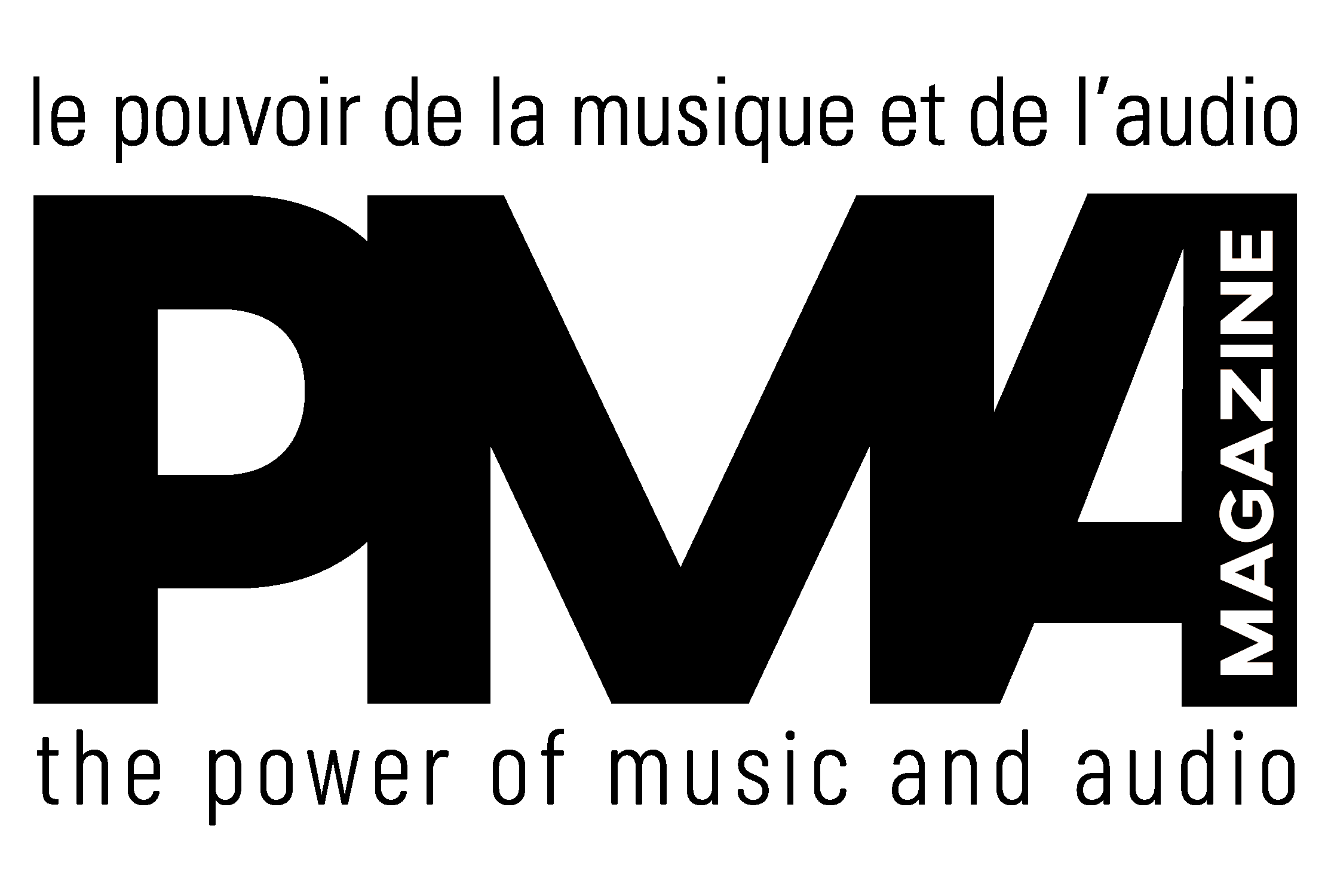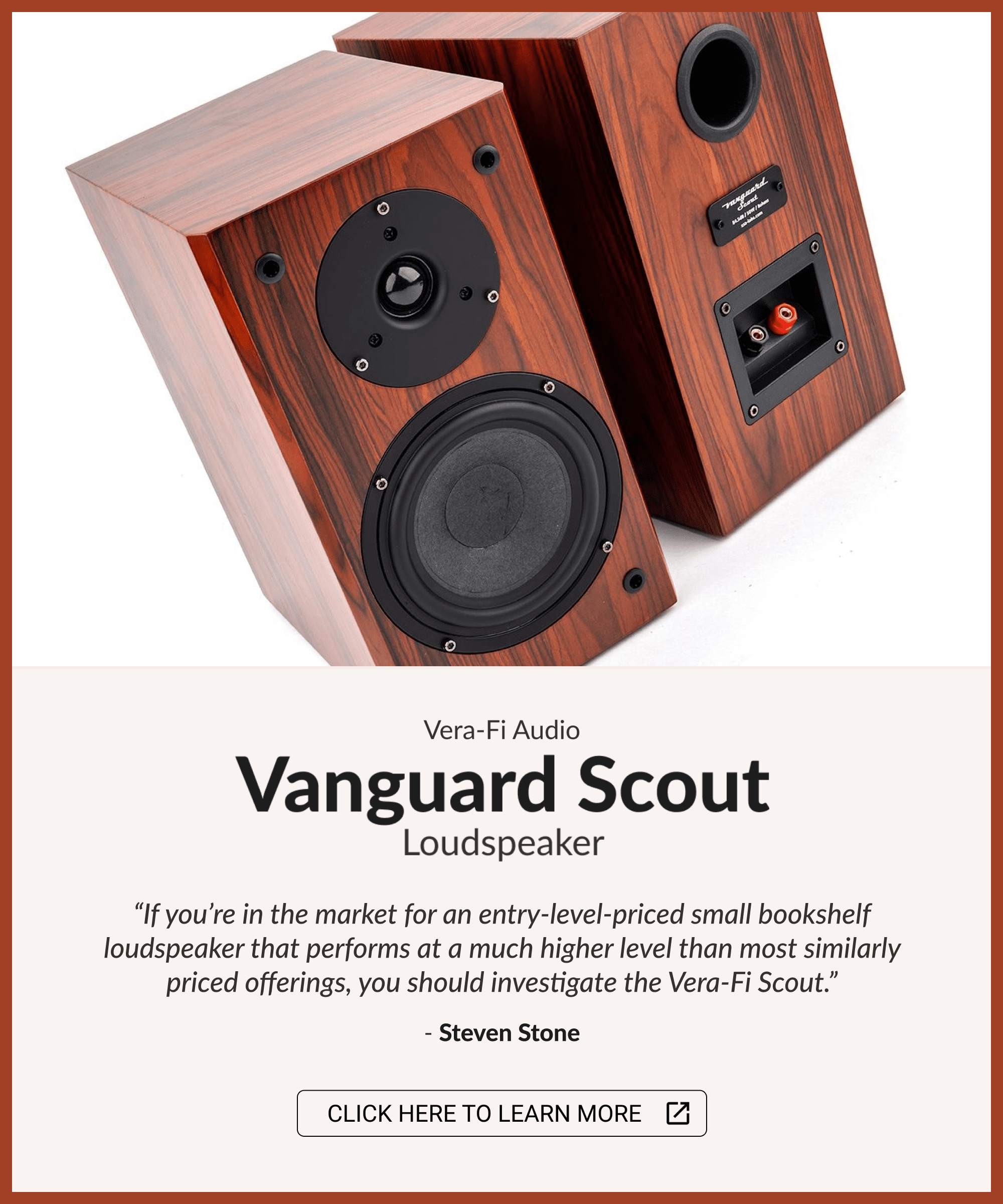
Photos by Paul Bowes unless otherwise noted.
EMI Mitigation
I’ve spent a lot of time exploring possible ways of reducing the effects of EMI on the sound quality of my hi-fi system. While doing this, I’ve been astonished by how much EMI affects the music.
The worst possible scenario is to have your expensive stereo plugged into a cheap power bar along with noisy electronics such as a TV, HD Box, and other video equipment, as well as network switches and switched-mode power supplies (SMPS), as all of these will pollute your system’s power source with noise that impacts musical detail.
EMI can come from a variety of sources, from inside and outside your components, including from neighbouring components, power cables, and other cables that pick up radio signals. Power supplies generate high frequency noise, especially from SMPSs.
The best products use internal EMI shielding around their power supplies or completely isolate them to block EMI from reaching the more sensitive parts on a circuit board. As I’ve mentioned elsewhere in the virtual pages of PMA, the judicious use of copper tape around the areas of a signal cable closest to a power cord, which is one of the worst emitters of EMI junk, works in maintaining the integrity of the music signal as it moves from one place to the next. Beyond shielding, EMI can be eliminated by connecting your system to an isolated, low-impedance ground, or a power conditioner designed to block EMI, such as iFi’s PowerStation, which promises to do exactly that.
I’ve also lately experimented with Synergistic Research Tranquility PODs, a product designed to reduce EMI inside an audio component, with very good results.
Speaker Crossovers And Phase Distortion
Every speaker with multiple drivers uses a frequency crossover to send the appropriate signals to the proper drivers, e.g. the bass driver, midrange driver, and tweeter. Unfortunately, all crossovers smudge the signal to some extent. The problem is two-fold. Due to air compression, the parts on an internal crossover will violently vibrate, causing signals to distort. Another issue is phase distortion, which occurs when two different speaker drivers are creating music in the same frequency range at the same time. For example, a bass driver may create musical notes from 20Hz to 340Hz with some bleed into higher frequencies above 340Hz. If the lower midrange driver creates music from 290 Hz-1200 Hz, the overlap between frequencies in the 290Hz-340Hz region and higher is creating phase distortion that muddies the music, making vocals and instruments sound less focused and lyrics harder to understand.
If you already own speakers with internal crossovers, i.e. most on the market, there’s not much you can do against phase distortion. But if you’re in the market for speakers, you can choose to buy a model that uses an outboard crossover, and as such is impervious to inner-cabinet vibrations, or one that’s designed to mitigate or even completely eradicate phase distortion. Options for the latter include speakers that are crossoverless, single-driver (or full-range) designs, such as those made by Omega or Cube, or electrostatic, panel types, such as those from Magnepan. While these speakers won’t deliver the same frequency extension as from a full-range multi-driver speaker, what you forfeit in the lowest bass or airiest highs you gain in a midrange clarity and transparency that can be intoxicating. Or, if you’re not in the mood to sacrifice too much low bass, you could opt for a horn or electrostatic model that incorporates a separate dynamic bass driver, such as the models made by MartinLogan and Avantgarde. Another option is to buy a speaker that uses a digital crossover, such as Linn’s Exakt speakers. A well-designed digital crossover can more evenly and precisely distribute frequencies among drivers and, consequently, will produce less phase distortion.

If you get a chance to compare similar models, one with and one without an internal crossover, or one with and one without phase distortion, I’m sure you’ll be surprised by how much an internal crossover and phase distortion impairs the sound.
Vibration Control
Vibration control is one of the most misunderstood aspects of stereo optimization. Many people simply can’t believe that vibrations can affect the sound of their components, especially ones with no moving mechanical parts. Sure, gear with moving mechanical parts will probably benefit most from vibration control, but I’ve heard dramatic improvements using anti-vibration devices with all sorts of electronics and speaker cabinets.
A real-world example of using vibration control to tweak performance can be found on a nuclear submarine, whose electronic equipment has to vibrate the least amount possible, both to better hear the enemy outside the vessel, and, more crucially, as far as we’re concerned, to reduce the sonic signature of the submarine—the playback system—so its superfluous sounds aren’t detected. In this sense, a playback system is no different—it should produce the least amount of superfluous sounds to avoid detection.
To begin with, our systems have to contend with three kinds of vibration: airborne, which, ultimately, originates from our speakers; structure-borne, which enters the equipment via its resting place; and self-induced, which comes from the unit itself, such as from a CD tray or transformer. In other words, our electronics and speakers vibrate due to a combination of external and internal forces, and if these aren’t addressed, they will invariably corrupt the signal and reduce the sonic fidelity of our playback systems.
Luckily, there are many effective products on the market, in the form of footers and hi-fi stands, designed to keep vibrations away from our components’ more delicate and vulnerable-to-noise parts, i.e. resistors, capacitors, transistors, chassis, and cabinets. Benefits of using them include a tightening up of the sonic image, and better focus, resolution, and transparency, along with firmer bass. I can’t stress enough the importance of having a good stand or shelf to put your equipment on, such as those made by Solid Steel, Quadraspire, Salamander, Stillpoints, Silent Runnings, and Naim, among others. You don’t have to spend an arm and a leg to get something good, but I suggest you buy a stand you can check out pre-purchase for its stability and solidity—you don’t want one that sways from side to side—and, if possible, whose shelves are decoupled from the frame so that vibrations don’t travel through the whole of the unit. You want your electronics to be as inert as possible on whatever they’re sitting.
A turntable should get special attention when it comes to vibration control to prevent vibrations from feeding back into it and being audibly magnified. Solutions include using specialized turntable platforms from specialized companies such as IsoAcoustics, or, if you want to spend less, a combination of butcher blocks and footers.
Other low-cost solutions include using silicon-rubber pads and IKEA Gunstigs. In an earlier article, I listed a variety of footers for components and speakers that I’ve had personal experience with and found effective, including IsoAcoustics Gaias, Iso-Pucks, Oreas, Nordost Sort Kones, and Synergistic Research MiGs.

The Listener and Listening Position
Once you’ve optimized your system so that it preserves the musical signal as faithfully as possible, it’s then your role to make sure the signal reaches your ear, from the speaker, as faithfully as possible. That’s why it’s important that you neither sit too far away from the speakers nor too close to the back wall, otherwise what you’ll hear most are reflections bouncing off hard surfaces. Room treatment can also be immensely helpful in keeping the sound in your room organized. It’s also generally a good idea to sit so that your ear is level with the tweeters. If the goal is to become immersed in the music, it’s always preferable to hear direct sound over reflected sound, just as it’s preferable to watch a TV show directly from the TV rather than from a reflection in a mirror.
Another good idea is to remove any sources of noise independent of the listening room, such as from a nearby fridge or heating system, that will encroach on your ability to fully enter a state of suspended disbelief. Think of that nuclear submarine. It won’t work if it’s detected.
Life is full of noise. Don’t you want to hear less of it from your system?
















Leave a Reply